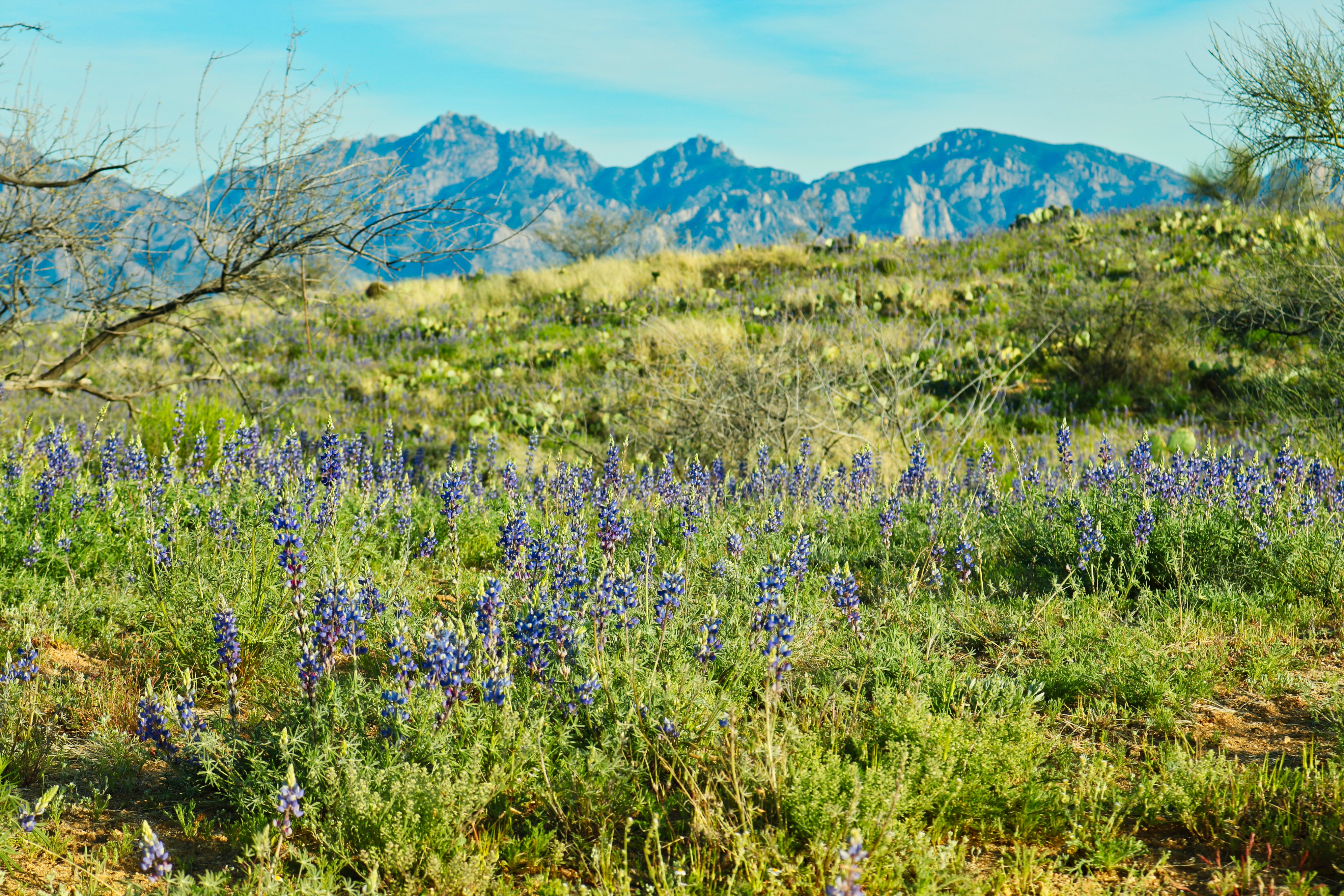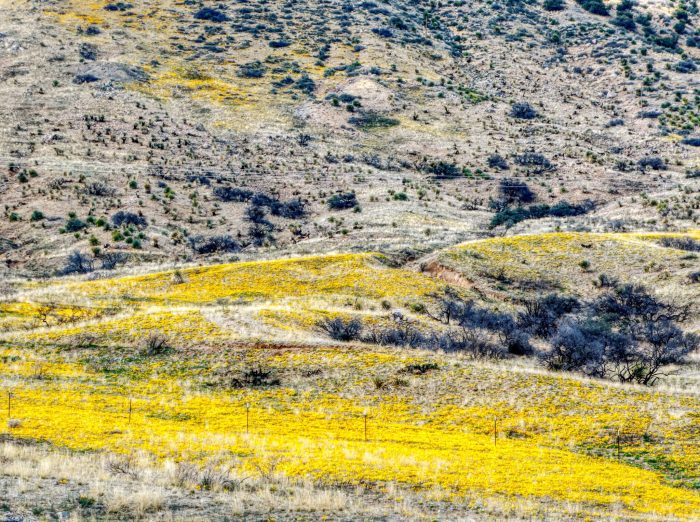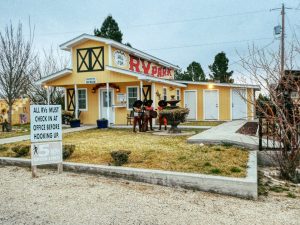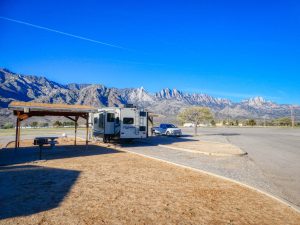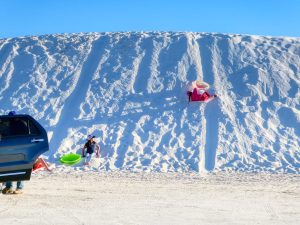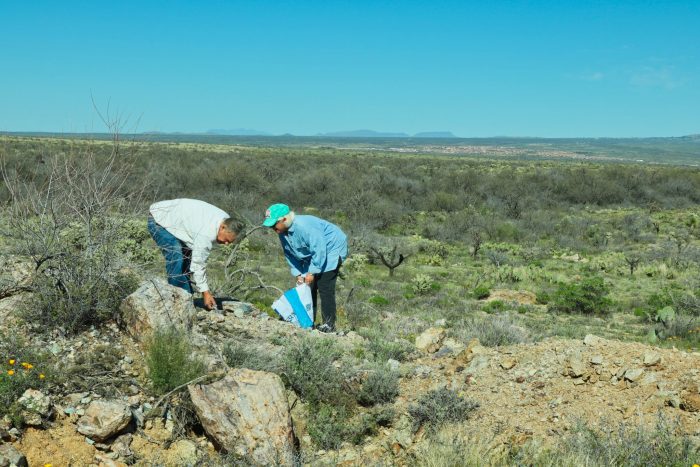
Our plans in Tucson called for camping at Davis-Monthan Air Force Base, one of the few military campgrounds that do not accept reservations. We weren’t worried however because the campground has 198 sites plus an overflow area and felt confident that there would be space for Lucy. Wrong! On the way in, Helen received a message from her friend Pete about a huge airshow scheduled during our time there and space would be very tight. He recommended Voyager RV Resort near the Base as a place to contact. It’s good to have friends.

It turns out that the Voyager Resort has an affiliation with the Thousand Trails organization and we obtained a membership when we purchased Lucy. Therefore, we could camp at a first-class resort for about less than the price of the Air Force Base. Learning this, we extended our stay in Tucson for two extra days. Voyager Resort has three swimming pools, dozens of pickleball and tennis courts, a pub and grill, and a laundry. We would indeed be “glamping” for the next four days.

Helen did her usual research and decided that on day two, we should drive to the summit of Mt. Lemmon, the highest point in the Santa Catalina Mountains at an elevation of 9,159 feet. We heard that there was snow on the ground there along with great opportunities for picture taking. The ride up was fascinating as there were Saguaro (Say-wa-row) cactus on both sides of the road up to about 4,000 feet where they suddenly disappeared. At that point, the rock formations stood out and were equally fascinating.

As predicted, we began to see snow at around 7,000 feet. Snow had fallen recently, and snow melts slowly there. The ski resort closed for the season on the day we arrived. We walked through the small ski village before beginning our trek back down the mountain. We stopped for a short hike at one overlook and grabbed a few pictures from the side of the mountain. Tucson is visible in the distance (image above).

The next day temperatures were delightfully crisp and the sky a brilliant bright blue; a perfect day for a hike. Pete, a childhood friend, neighbor, and former classmate of Helen’s agreed to serve as a guide for a couple of tenderfeet from Tennessee. Pete has lived in Tucson for over twenty years and is a student of geology. He has a passion for studying the Prehistoric inhabitants of the desert and uncovering the tools, artifacts, and drawings they left behind–things that Helen and I know little about. We met at his office and drove to a private ranch north and west of Tucson in an area Pete referred to as the Chirreon Canyon. Once we left the main highway, a Diamondback rattlesnake came out to greet us. He seemed a bit miffed that we disturbed his nap, so we drove around him.

Pete’s knowledge of the desert and almost everything found there is remarkable. He always carries a rock hammer with him and is continually picking at the sun-baked sand while he walks. From the moment we left the car, we began to find pieces of pottery about the size of silver dollars. One part that I picked up had coloring that indicated a design of some sort painted on a pot or bowl. These pieces were everywhere around us.

Also around us were cacti of every variety including Saguaro, Cholla, and Barrel cactus. Helen, wearing only sneakers and not boots, suddenly felt something sharp on the bottom of her foot. When she removed her shoe, Pete used his knife to remove three cactus spines that had penetrated the sole. They came from Barrel cactus and served as further evidence of Helen’s tenderfoot status.
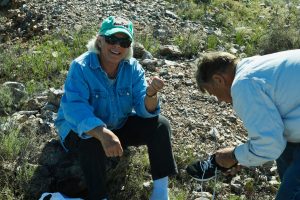
The ruins that we uncovered most likely came from the Hohokam (Ho-ho-kom) culture that occupied the area from around 700 to 1300 AD. The Apaches arrived about 1300 AD, and the Hohokam migrated out. According to Pete, the ceramics we found are the most defining markers of the cultures in general and the Hohokams in particular.
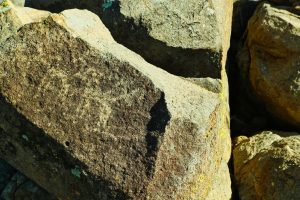
We saw other evidence of a Prehistoric culture when Pete led us to some ancient drawings or “petroglyphs” made by ancient peoples on the large rocks in the desert. Pete said these drawings were created thousands of years before the Hohokams arrived, maybe 5,000 years earlier. We saw a faded sketch of what appears to be a horse or antelope, and another drawing of a group of men. Again, fascinating.

On our way out of the area, Pete suddenly stopped his car then walked to the side of the trail to pick up three rocks about the size of softballs. These are called Manos and probably came from the Hohokam period. The Hohokams used these rocks to grind grain into flour on a more massive stone called a metate. The grinding movement eventually wore one side of the Mano smooth as shown in this picture. Pete gave us one of the Manos and said it was museum quality. It will stay with us forever.


At the end of a great day, our last view of the desert was a patch of Bluebonnets along our trail. Thanks, Pete. It was great Easin’ Along with you.

